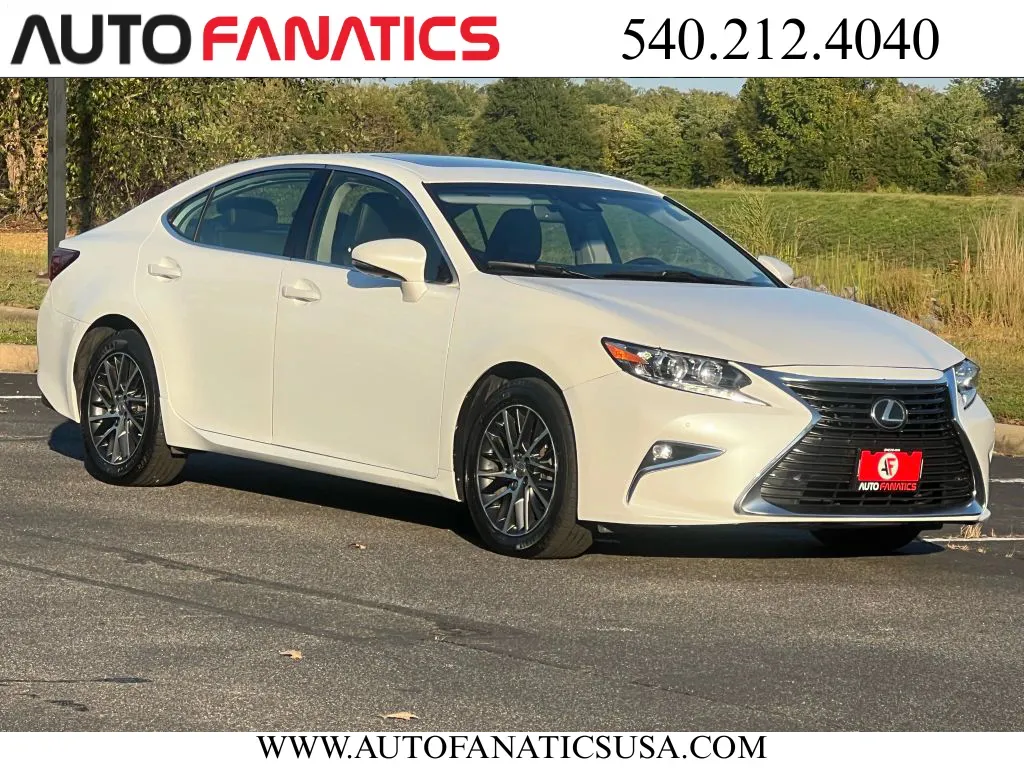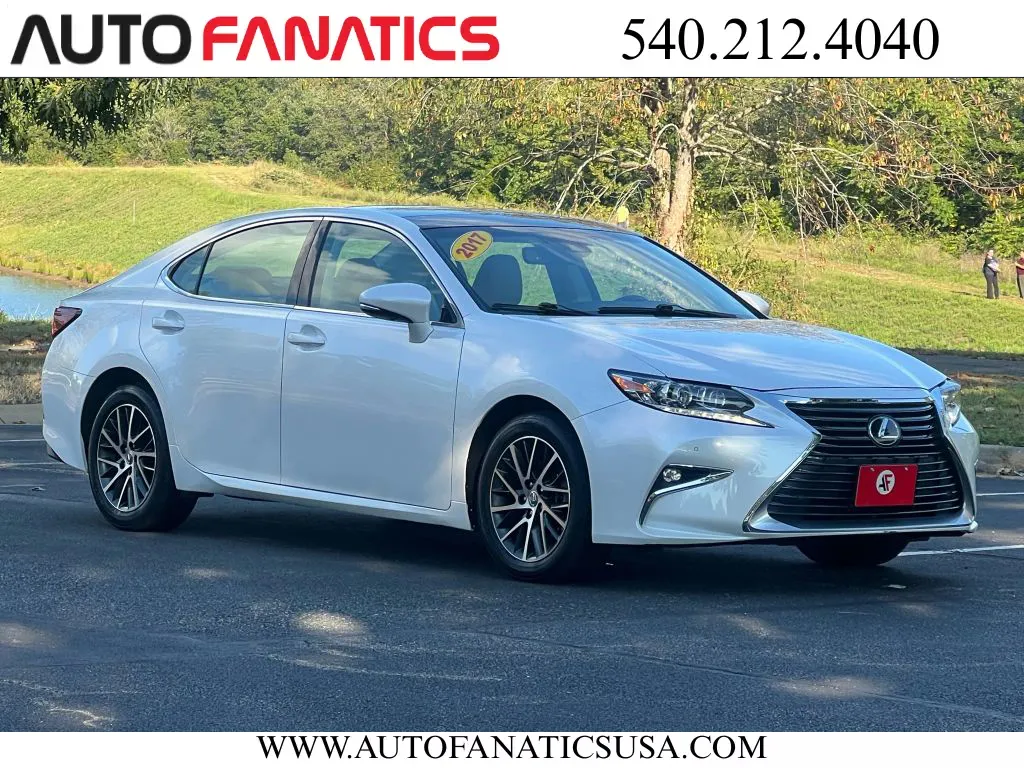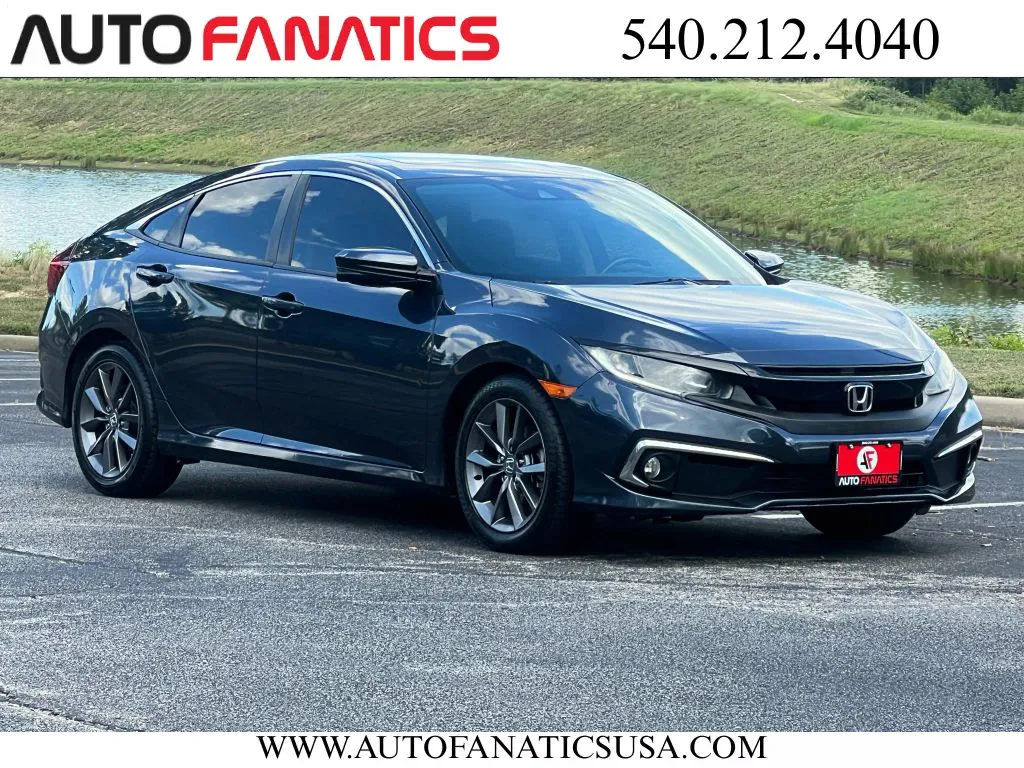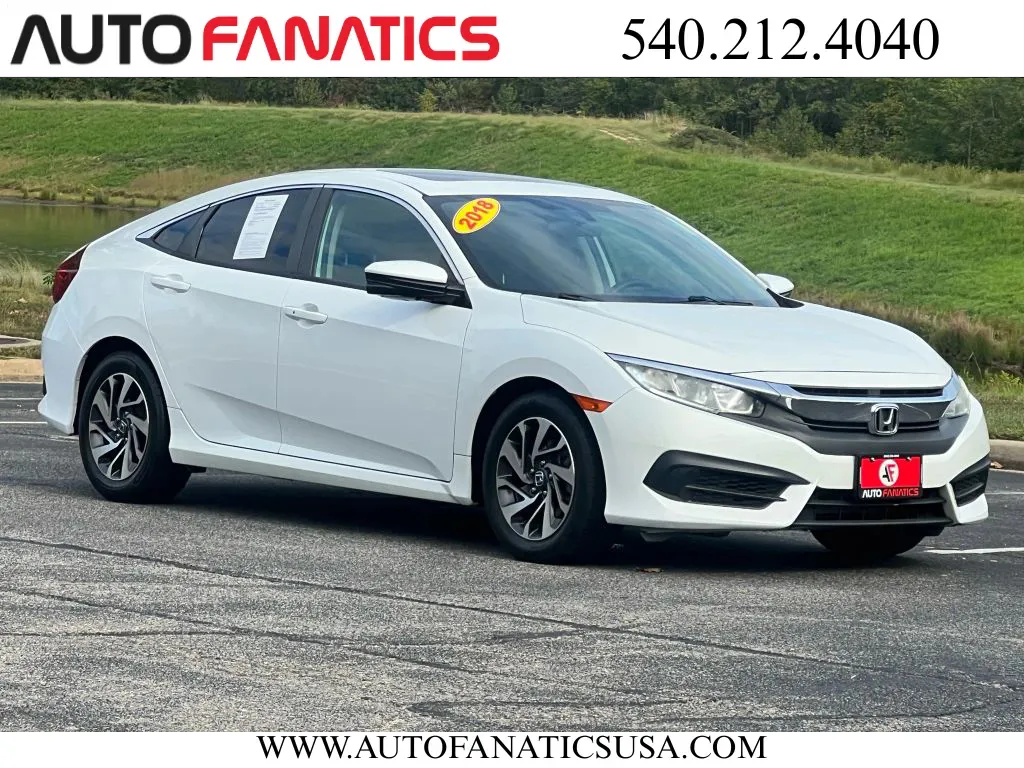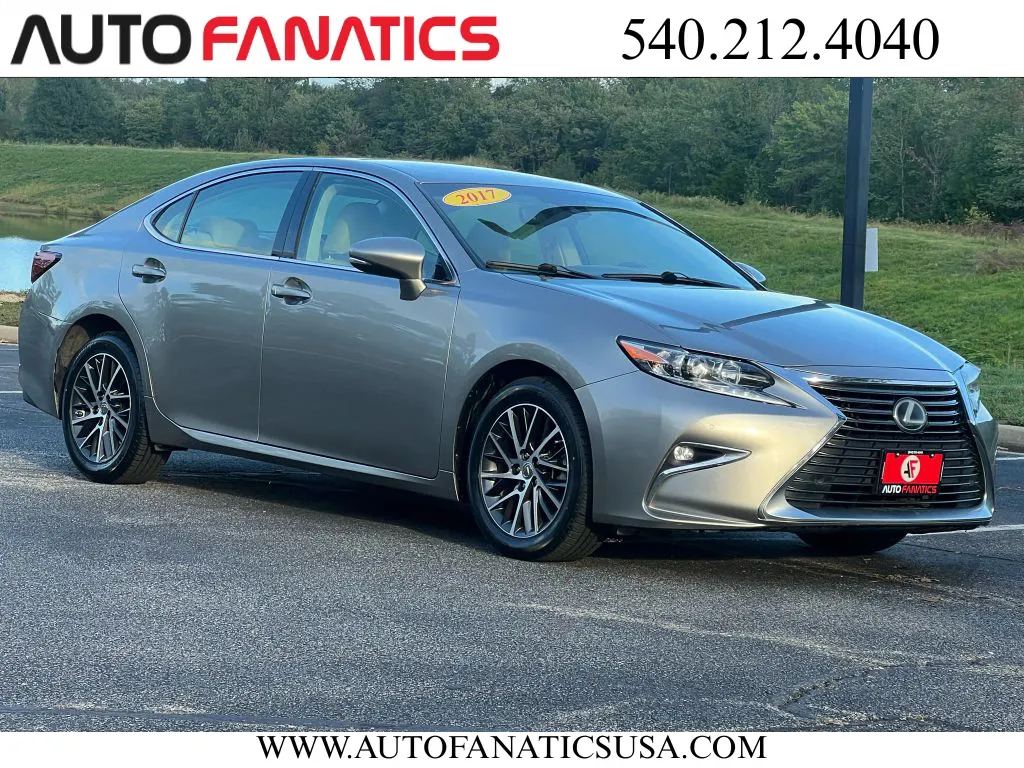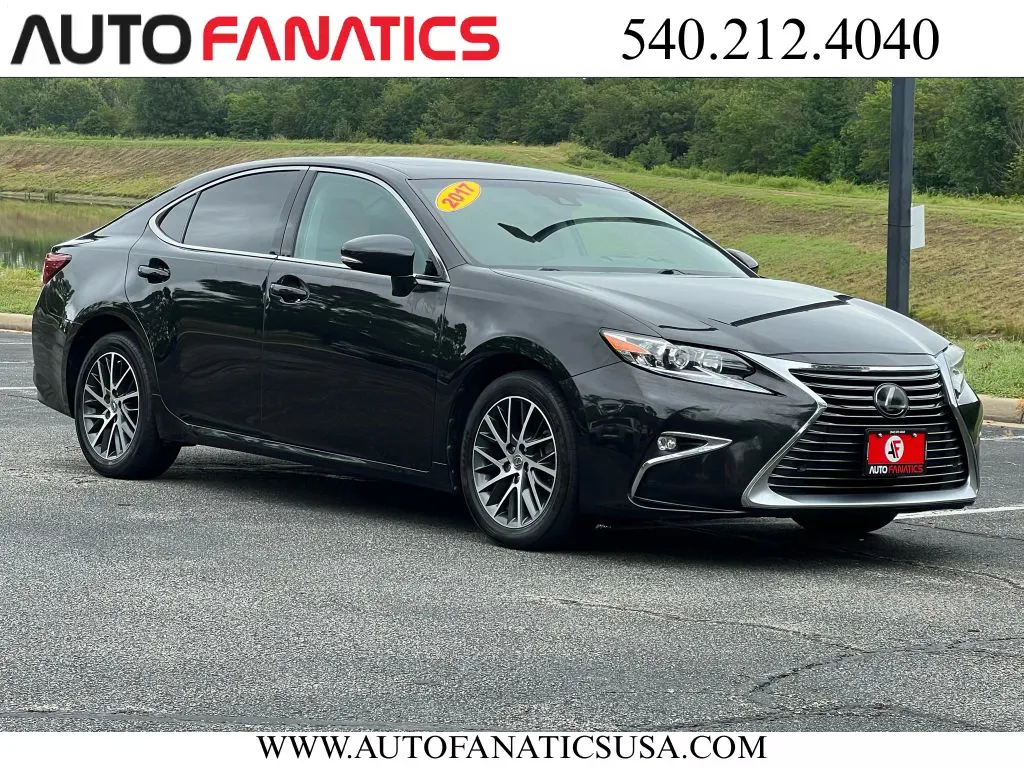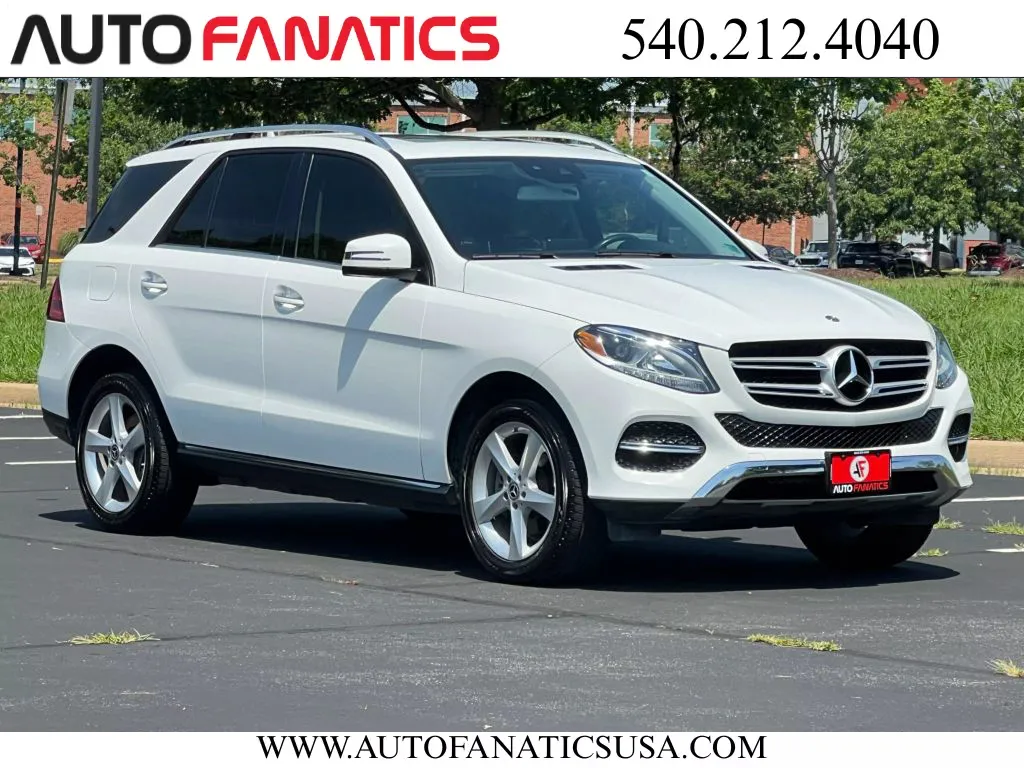Your Guide to Finding the Cheapest Car Loan Rates
Here in the Fredericksburg area, we know that buying a car is a big decision for you and your family. At Auto Fanatics, our goal is to make the entire experience transparent and stress-free, and that includes the financing. Finding the perfect used truck or SUV is the fun part; securing the right loan is what makes it a smart investment. We believe that helping you find the cheapest car loan is a key part of our commitment to you. This guide shares the strategies we use every day to help our customers save money and drive away with a deal they feel great about.
Key Takeaways
- Get Pre-Approved First: Walk into the dealership with a loan offer already in hand from your bank or a credit union. This sets a clear budget, gives you a competitive rate to use as a benchmark, and strengthens your negotiating position.
- Look Beyond the Monthly Payment: A low monthly payment can hide a costly, long-term loan. Always compare offers using the Annual Percentage Rate (APR) and the total interest paid to understand the true cost of borrowing.
- Make a Strong Down Payment: Putting more money down upfront reduces the amount you need to borrow. This lowers your monthly payments, helps you secure a better interest rate, and saves you significant money over the life of the loan.
Get to Know Car Loan Basics
Before you start comparing lenders, it’s smart to get comfortable with auto financing basics. Understanding what goes into a car loan gives you the confidence to ask the right questions and find a deal that works for your budget. Think of it as your pre-game prep. A little knowledge here goes a long way in saving you money and stress. We’ll walk through the three biggest pieces of the puzzle: your credit score, the factors that shape your interest rate, and the power of a good down payment.
How Your Credit Score Affects Your Rate
Your credit score is one of the first things a lender looks at, and it plays a huge role in the interest rate you're offered. A higher score shows lenders you have a strong history of managing debt responsibly, making you a lower-risk borrower. This usually translates to a lower interest rate, which can save you thousands over the life of the loan. Before you apply, it’s a great idea to know where you stand. You can even get pre-qualified to see what rates you might be eligible for without impacting your score.
What Determines Your Interest Rate
While your credit score is a major player, it’s not the only factor in your interest rate. Lenders also consider the loan term—the length of time you have to pay it back. Shorter terms often have lower interest rates but higher monthly payments. They also look at the vehicle itself—its age, mileage, and price—and the loan-to-value (LTV) ratio. Because so many variables are at play, it’s helpful to experiment. Using a car loan calculator can show you how changing these details affects your potential monthly payment and total interest.
The Role of a Down Payment
Making a down payment is one of the best ways to set yourself up for a better loan. When you put money down, you reduce the total amount you need to borrow. This is a big win for two reasons: it lowers your monthly payments and shows the lender you’re financially committed. This can reduce their risk and often helps you secure a more competitive interest rate. While 20% is a common recommendation, any amount helps. If you have a vehicle to trade in, you can also get its trade-in value and apply that amount to your down payment.
Where to Find the Best Car Loan Rates
Finding the right car is exciting, but finding the right loan to pay for it is just as important. The interest rate you secure can make a difference of hundreds or even thousands of dollars over the life of your loan. The good news is that you have several options, and a little bit of shopping around can go a long way. Think of it like comparing car models—you want to see what’s out there to find the best fit for your budget. From your local credit union to online lenders and dealership financing, each path offers unique benefits. Let's break down where you can find the most competitive rates.
Comparing Credit Unions and Traditional Banks
Your own bank or a local credit union is often a great starting point for a car loan. Since you already have a relationship with them, they have a clear picture of your financial history, which can sometimes lead to a more favorable rate. Credit unions, in particular, are member-owned, not-for-profit institutions, and they often pass those savings on to their members with lower interest rates and fees. Traditional banks offer the convenience of handling all your finances in one place. It’s always a smart move to get a quote from your bank or a nearby credit union to have a baseline rate you can use for comparison.
Exploring Online Lender Options
In recent years, online lenders have become a popular and powerful option for securing auto financing. Their biggest advantage is convenience. You can apply for a loan and get a decision from the comfort of your home, often within minutes. Many online lenders also allow you to get pre-qualified for a loan. This process gives you a clear idea of the rate and terms you can expect without impacting your credit score, making it the perfect way to compare multiple offers risk-free. This puts you in a strong position before you even step foot in a dealership.
The Benefits of Dealership Financing
One of the most straightforward ways to finance your car is directly through the dealership. It’s a one-stop-shop experience—you find your car and secure your loan all in the same place. Dealerships don’t lend money themselves; instead, they have established relationships with a wide network of banks, credit unions, and other financial institutions. They submit your application to multiple lenders on your behalf to find a competitive rate for you. This saves you the time and effort of applying to each lender individually. For many buyers, the simplicity and convenience of handling everything at once is a major plus.
How Auto Fanatics Delivers Competitive Rates
At Auto Fanatics, we combine the best aspects of dealership financing with our commitment to a transparent, customer-first experience. We’ve built strong partnerships with a diverse group of trusted local and national lenders to find you the best possible financing for your situation. Our team does the comparison shopping for you, leveraging our network to secure competitive rates that fit your budget. You can start the process right from our website by using our simple online application to get approved. This streamlined approach saves you time and ensures you’re getting a great deal without the hassle, letting you focus on the fun part: choosing your next car.
How to Get Pre-Approved for Your Loan
Getting pre-approved for a car loan is one of the smartest moves you can make before you even start looking at vehicles. Think of it as your golden ticket to a stress-free car-buying experience. A pre-approval is a conditional offer from a lender stating how much you can borrow and at what interest rate. It shows sellers you’re a serious buyer and gives you a firm budget to work with, so you can shop with confidence. The process is straightforward, and getting your finances in order beforehand puts you in the driver's seat during negotiations. Let’s walk through the simple steps to get it done.
Check and Improve Your Credit Score
Your credit score is a big factor in what interest rate you get. Lenders see a higher score as a sign of a reliable borrower, which usually means you'll be offered lower rates. Before you apply, it’s a great idea to know where you stand. You can get a free copy of your credit report from the major bureaus annually. If your score isn't where you'd like it to be, you can take simple steps to improve it, like making all your payments on time and paying down credit card balances. Even a small increase can make a big difference in your loan's total cost over time. For more details, you can find great resources on how to build credit.
Gather Your Documents
Walking into a loan application prepared is the best way to make the process quick and painless. Lenders will need to verify a few key things about you, so having your documents ready will speed everything up. You'll need to show paperwork to prove who you are, where you live, and how much you earn. Think of it like a simple checklist. Grab your driver's license or another form of government-issued ID, a recent utility bill or bank statement with your current address, and your most recent pay stubs. Having these items organized and on hand shows you’re serious and helps your lender process your application without any delays.
Verify Your Income and Employment
Lenders want to see that you have a steady source of income to comfortably make your monthly payments. If you have a traditional job, your last two or three pay stubs and recent bank statements will usually do the trick. Some may also ask for your most recent W-2. If you're self-employed or a freelancer, you can use your last two years of tax returns and several months of bank statements to show your income history. The goal is simply to provide a clear picture of your financial stability. When you're ready, you can use these documents to get approved online right from your home.
Understand Insurance Requirements
Before you can drive your new car home, your lender will require you to have auto insurance. This is because the vehicle acts as collateral for the loan, and the lender needs to protect their investment. Remember that car insurance is a regular cost you'll have to pay, so it's smart to get a few quotes while you're car shopping. This way, you can factor the insurance premium into your overall monthly budget and avoid any surprises. Using a car loan calculator can help you see how the loan payment, insurance, and other costs all fit together, giving you a complete financial picture.
Compare Loan Offers Like a Pro
Once you have a few loan offers in hand, the real work begins. It’s tempting to just pick the one with the lowest monthly payment, but that can be a costly mistake. Comparing loans effectively means looking beyond that single number to understand the total cost of borrowing money. Taking a few extra minutes to analyze the details can save you hundreds, or even thousands, of dollars over the life of your loan. Think of it as your final financial check-up before you drive away in your new-to-you car. Let’s break down exactly what you should be looking for.
Know the Difference: APR vs. Interest Rate
First things first: don't confuse the interest rate with the Annual Percentage Rate (APR). The interest rate is simply the cost of borrowing the principal loan amount. The APR, however, is the true cost of the loan. It includes the interest rate plus any additional lender fees, like origination or processing fees. Because of this, you should always compare offers using the APR. It gives you a more accurate, apples-to-apples view of what you’ll actually pay. When you’re ready to see what you qualify for, you can get approved through our secure online application to get a clear picture of your potential APR.
Evaluate Loan Terms and Length
The loan term is how long you have to pay back the loan, usually expressed in months (e.g., 48, 60, or 72 months). A longer loan term will give you a lower monthly payment, which can seem very appealing. However, be careful. A longer term means you'll pay much more in total interest over the life of the loan. The best strategy is to choose the shortest loan term with a monthly payment you can comfortably afford. You can use a car loan calculator to experiment with different terms and see how they impact both your monthly payment and the total interest you’ll pay.
Watch Out for Hidden Fees
A great APR and a manageable term can be quickly undermined by hidden fees. Before you sign anything, read the loan agreement carefully and ask about any charges you don’t understand. Some common fees to watch for include origination fees (for processing the loan), documentation fees, and prepayment penalties, which charge you for paying off the loan early. Don't just look at the monthly payment; always check the APR, the loan term, and any fees to understand the full picture. A transparent lender will be happy to walk you through every line item.
Use a Loan Comparison Tool
To make a smart decision, you should always compare loan offers from at least three different lenders. An easy way to do this is to create a simple chart or spreadsheet. List each lender and then create columns for the key details: the loan amount, APR, loan term in months, the monthly payment, and the total cost of the loan (monthly payment x term). Seeing the numbers side-by-side makes it easy to spot the best overall deal, not just the one that looks good at first glance. You can even get pre-qualified with CapitalOne right on our site to get a competitive offer to start your comparison.
Find Special Financing Programs
Finding a great car loan isn't just about comparing standard rates from banks and credit unions. Sometimes, the best deals are hiding in plain sight through special financing programs. These programs are designed for specific situations or types of buyers, and knowing they exist is the first step toward saving money. Think of it as having a secret menu of financing options.
Many lenders and dealerships offer these programs to help people get into a car they love. Whether you're a first-time buyer struggling to get approved or a veteran looking for a well-deserved discount, there’s likely a program out there for you. The key is to ask. A good finance team will work with you to find every possible saving, so don't hesitate to inquire about special offers when you're ready to get approved for a loan.
Look for Manufacturer Incentives
You’ve probably seen commercials for brand-new cars advertising incredibly low or even 0% APR financing. These are manufacturer incentives, designed to move specific models. While they sound amazing, it’s good to know they often come with a trade-off—you might have to give up a cash rebate to get the special rate. These deals are also typically reserved for new vehicles and buyers with excellent credit. Even though we specialize in high-quality used cars, it’s helpful to understand how these manufacturer financing deals work so you can weigh all your options in the market.
Ask About First-Time Buyer Programs
Buying your first car is a huge milestone, but it can be tough to secure a loan without a long credit history. That’s where first-time buyer programs come in. Many lenders have created these programs specifically to help new buyers get behind the wheel. They often feature more lenient requirements, such as a lower down payment or a more flexible view of your credit history. If you’re just starting to build your credit, be sure to ask about these options. It could be the perfect way to get a fair loan and start your credit journey on the right foot.
Check for Military and Other Discounts
If you are an active-duty service member, a veteran, or a military spouse, thank you for your service. You should also know that many lenders and dealerships offer military appreciation discounts on auto loans. Given our location in the Fredericksburg area, we see many service members and are always happy to help find these programs. These discounts can come as a lower interest rate or cash back. Similar programs sometimes exist for first responders, teachers, or recent college graduates. These offers aren't always advertised, so make it a point to ask your lender what’s available.
Keep an Eye Out for Seasonal Promotions
The car industry often has its own rhythm, with sales events and promotions popping up around certain holidays and times of the year. Think President's Day, Memorial Day, or end-of-year sales events. During these periods, dealerships may offer special financing rates or other deals to attract customers. A great way to stay on top of these promotions is to keep an eye on a dealership’s website. You can see what’s new and find the right vehicle for your budget by browsing our current inventory and checking for any seasonal offers.
Avoid These Common, Costly Mistakes
Getting a car loan can feel complicated, but a few smart moves can save you a lot of money and stress. It’s easy to get tripped up by the numbers and details, especially when you’re excited about a new car. But by avoiding a few common pitfalls, you can make sure you’re getting a great deal on your financing, not just the vehicle itself. Let’s walk through the mistakes that can cost you the most and how you can sidestep them like a pro. Being prepared is your best strategy for securing a loan that truly works for your budget.
Looking Only at the Monthly Payment
It’s so tempting to focus on one number: the monthly payment. If it fits in your budget, it’s a good deal, right? Not always. A low monthly payment can hide a much higher total cost. This often happens when a loan has a very long term or a high Annual Percentage Rate (APR). The APR is the true cost of borrowing money, including interest and fees. Before you agree to anything, look at the total amount you’ll pay over the life of the loan. A helpful tool like a car loan calculator can show you the full picture, so you know exactly what you’re signing up for.
Agreeing to an Extended Loan Term
To get that lower monthly payment, you might be offered a longer loan term—sometimes six, seven, or even eight years. While this makes the monthly bill smaller, it means you’ll be paying interest for a much longer time. Over the years, that extra interest adds up to a significant amount. You could end up paying hundreds or even thousands more for the same car. It’s important to find a balance. Choose the shortest loan term you can comfortably afford to save money on interest and pay off your car faster.
Skipping the Pre-Approval Step
Walking into a dealership without a loan pre-approval is like going grocery shopping without a list—you’re more likely to end up with something you didn’t plan for. Getting pre-approved for a loan from a bank, credit union, or online lender before you start shopping is a game-changer. It tells you exactly how much you can afford and shows sellers you’re a serious buyer. This gives you powerful negotiating leverage. At Auto Fanatics, you can even get pre-qualified online to know where you stand before you visit.
Forgetting to Negotiate the Car Price First
Always treat buying the car and financing the car as two separate transactions. First, focus all your energy on agreeing on a fair price for the vehicle. Don’t let the conversation drift to monthly payments or financing terms until you’ve settled on the car’s price tag. Once you have a firm price, then you can discuss financing. This prevents the numbers from getting mixed together in a confusing way and ensures you’re getting the best deal on both the car you want and the loan you need to buy it.
Simple Ways to Save Money on Your Loan
Beyond finding the right lender and getting pre-approved, a few smart strategies can help you cut down the long-term cost of your auto loan. These simple adjustments can make a big difference in your monthly payment and the total interest you pay over time. Think of them as the final polish on your car-buying plan, ensuring you drive away with a deal that feels as good as your new-to-you car. With a little planning, you can secure a loan that fits comfortably within your budget.
Time Your Purchase for Better Rates
Believe it or not, when you buy can sometimes influence the financing you get. While you might see commercials for 0% APR deals, those are typically manufacturer incentives reserved for brand-new models. However, that doesn't mean you can't find a great deal on a used car loan. Dealerships often run their own promotions or have special arrangements with lenders during certain times of the year, like at the end of a quarter or during holiday sales events. The key is to stay informed and ask what financing specials are available when you're ready to buy.
How Your Vehicle Choice Makes a Difference
The car you choose has a direct impact on your loan. Lenders consider the vehicle's age, mileage, and overall value when determining your interest rate. While some lenders might offer slightly lower rates on new cars, the massive depreciation a new car experiences in its first few years often makes a high-quality used car the smarter financial choice. By selecting a reliable, well-maintained used SUV or truck, you're already saving a significant amount on the purchase price, which can easily outweigh a tiny difference in interest rates.
Optimize Your Down Payment
One of the most effective ways to lower your interest rate and monthly payment is to make a healthy down payment. Putting more money down upfront reduces the total amount you need to borrow. This signals to lenders that you're a lower-risk borrower, which can help you qualify for a better rate. While there's no magic number, a common recommendation is to aim for a 20% down payment. You can use a car loan calculator to see exactly how different down payment amounts affect your monthly payments and total interest paid.
Consider Your Refinancing Options
Your relationship with your car loan doesn't have to end once you sign the papers. If your financial situation improves down the road—for instance, if your credit score goes up or if overall interest rates drop—you might be able to refinance. An auto refinance simply means replacing your current loan with a new one that has more favorable terms, like a lower interest rate or a smaller monthly payment. It’s a great option to keep in your back pocket that could save you hundreds or even thousands of dollars over the life of your loan.
Negotiate Your Best Rate
Walking into a financing discussion armed with knowledge is the best way to secure a great deal. Negotiation isn’t about being pushy; it’s about being prepared. When you understand the process and have done your homework, you can confidently advocate for the terms that work best for your budget. The goal is to find a loan that not only gets you into the car you want but also fits comfortably into your financial life for years to come. By taking a few strategic steps, you can ensure you’re in the driver’s seat during the entire financing process.
Prepare Before You Talk
The single most powerful step you can take is to get pre-approved for a loan before you even start shopping for a car. Securing pre-approval from a few different lenders—like your local credit union, a national bank, and an online lender—gives you a clear understanding of what interest rate you qualify for. This process turns you into a cash buyer in the eyes of the dealership, shifting the power dynamic in your favor. When you have a firm offer in hand, you have a benchmark to compare against any dealership financing. You can start the process right now and get pre-qualified to see where you stand.
Leverage Competing Offers
Once you have multiple pre-approvals, you can compare them to find the best one. Don’t just glance at the monthly payment. A lower monthly payment could be hiding a much longer loan term, meaning you’ll pay significantly more in interest over time. Instead, focus on comparing the Annual Percentage Rate (APR), the total loan term, and any associated fees. The APR is the most accurate measure of the cost of borrowing. Use a car loan calculator to see the total interest you’d pay for each offer. This allows you to leverage your best offer to see if a dealership can provide an even better rate.
What to Ask Your Lender
Whether you’re speaking with a bank or a dealership’s finance manager, it’s important to ask the right questions to get a full picture of the loan. Don’t hesitate to ask for clarification on anything you don’t understand. Key questions include: Is this a fixed or variable interest rate? Are there any penalties for paying the loan off early? What fees are included in the loan amount? You should also ask about the flexibility of loan terms. While many lenders advertise 48, 60, or 72-month terms, they may have other options available that better suit your financial goals.
Spot the Red Flags
A trustworthy lender will be transparent and straightforward. Be cautious of advertised rates that seem too good to be true or use vague language like "rates as low as..." without providing clear terms. Always read the fine print. Another red flag is a lender who pressures you into a longer loan term just to lower the monthly payment. While it might seem appealing, a longer term means you’ll pay more in interest and increase the risk of becoming "upside down"—owing more on the loan than the car is actually worth. A good financing partner will help you find a loan that makes sound financial sense.
Related Articles
- How to Apply For a Car Loan (Easy Guide)
- Car Loan Application: 7 Steps to Get Approved
- How to Apply for an Auto Loan in 7 Simple Steps
Frequently Asked Questions
Will checking my loan options hurt my credit score? This is a great question and a common worry. The short answer is no, as long as you do it the right way. When you get "pre-qualified" for a loan, lenders typically use a soft credit inquiry, which doesn't affect your score at all. This is the perfect way to shop around and compare rates. A hard inquiry, which can temporarily dip your score by a few points, usually only happens when you formally apply for the loan. The credit bureaus know people shop for rates, so multiple hard inquiries for the same type of loan within a short period (usually 14-45 days) are treated as a single event.
Is it better to get financing from my bank or through the dealership? There isn't one right answer here, which is why it's smart to explore both. Starting with your own bank or a local credit union is a great idea because you already have a relationship with them. Getting a pre-approval from them gives you a solid offer to use as a baseline. The advantage of dealership financing is convenience and access to a wide network of lenders. A dealership's finance team can send your application to multiple lenders at once, creating competition that can often result in a better rate than you might find on your own.
How much should I actually put down for a down payment? While you'll often hear the 20% rule, it's more of a guideline than a strict requirement. The most important thing is to put down an amount that feels comfortable for your budget. Any down payment is better than none. It reduces the amount you need to borrow, which lowers your monthly payment and can help you secure a better interest rate because it shows the lender you're financially invested. If you have a trade-in, that value can serve as a significant portion of your down payment.
Why is everyone so focused on the APR instead of the interest rate? It's easy to get these two mixed up, but the APR is the number you should always use to compare loan offers. The interest rate is just the cost of borrowing the money. The Annual Percentage Rate (APR) gives you the full picture by including the interest rate plus any lender fees rolled into the loan. Two loans could have the same interest rate, but the one with higher fees will have a higher APR, making it more expensive overall. Always compare loans using the APR for a true apples-to-apples comparison.
What if my credit isn't perfect? Can I still get a good car loan? Absolutely. While a higher credit score generally helps you get lower interest rates, many lenders work with people across the credit spectrum. Don't let a less-than-perfect score discourage you from applying. Dealerships, in particular, often have relationships with lenders who specialize in financing for various credit situations. The key is to be upfront about your circumstances. A good finance manager will work with you to find the best possible terms and help you get into a reliable vehicle that fits your budget.


